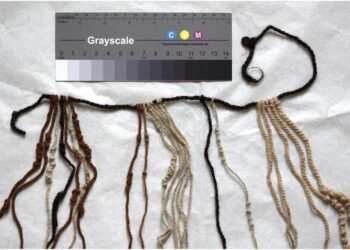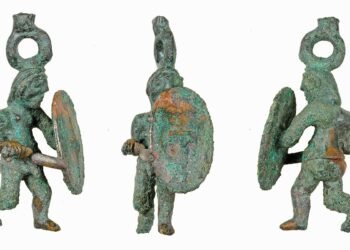A 220-year-old mystery surrounding the remains of infamous German outlaw Johannes Bückler, known as “Schinderhannes,” has at last been solved. An international research team used cutting-edge forensic techniques to confirm that a skeleton long thought to be that of another criminal, “Schwarzer Jonas” (Black Jonas), is in fact Schinderhannes. The true destiny of Schwarzer Jonas’ remains remains a secret.

Schinderhannes was one of the most infamous German robbers of his day, responsible for more than 200 crimes, ranging from theft and extortion to robbery. His life of crime ended in 1802 when he and a group of accomplices were arrested in Mainz, which was then under French rule. A year later, on November 21, 1803, he and 18 others, including Schwarzer Jonas, were guillotined in front of 30,000 spectators.
Two years later, Jacob Fidelis Ackermann, the University of Heidelberg’s first professor of anatomy, acquired the skeletons of Schinderhannes and Schwarzer Jonas for scientific examination. At some point in the early 19th century, though, the identification labels on the remains were accidentally swapped, and this misidentification persisted for centuries. Eventually, the skeleton thought to be Schwarzer Jonas disappeared, perhaps removed under the false impression that it was Schinderhannes.
In the latest research, which was published in Forensic Science International: Genetics, an interdisciplinary team comprising scientists from the US, Austria, Germany, Sweden, and Portugal re-examined the skeletal remains using multiple disciplines, including historical research, anthropological analysis, radiologic examination, isotopic analysis, and DNA testing.

“All these results, coupled with a careful analysis of historical documents, pointed to a possible mix-up of the two skeletons,” said Dr. Sara Doll, an anatomy specialist at Heidelberg University and curator of the anatomical collection.
One of the most surprising findings in the research was the result of isotope analysis, which showed where the man had lived as a child and as an adult. The evidence rather decisively showed that the skeleton originally labeled Schwarzer Jonas was indeed Schinderhannes, as it matched what was known about his life in the Hunsrück region of Germany.
To further confirm this, researchers turned to DNA analysis. A mitochondrial DNA match with a living fifth-generation descendant of Schinderhannes supported the findings. In addition, a new molecular genetic technique, which can examine nearly 5,000 nuclear DNA markers, provided irrefutable proof of a family connection spanning five generations.

The scientists also reconstructed Schinderhannes’ appearance based on genetic markers and concluded that he had brown eyes, dark hair, and fair skin—information that removes inconsistencies from historical paintings of the infamous outlaw.
Though the enigma of Schinderhannes’ skeleton has been unraveled, that of Schwarzer Jonas’ remains unknown. “It is possible that it was stolen or borrowed in the belief that it was the skeleton of ‘Schinderhannes’ and was never returned,” said Dr. Doll.
At the moment, Schinderhannes’ real skeleton is removed from public display for conservation purposes. However, visitors to the Anatomical Collection of Heidelberg University continue to be able to view an artist’s replica and also a model reconstructing his likeness.
























Comments 0